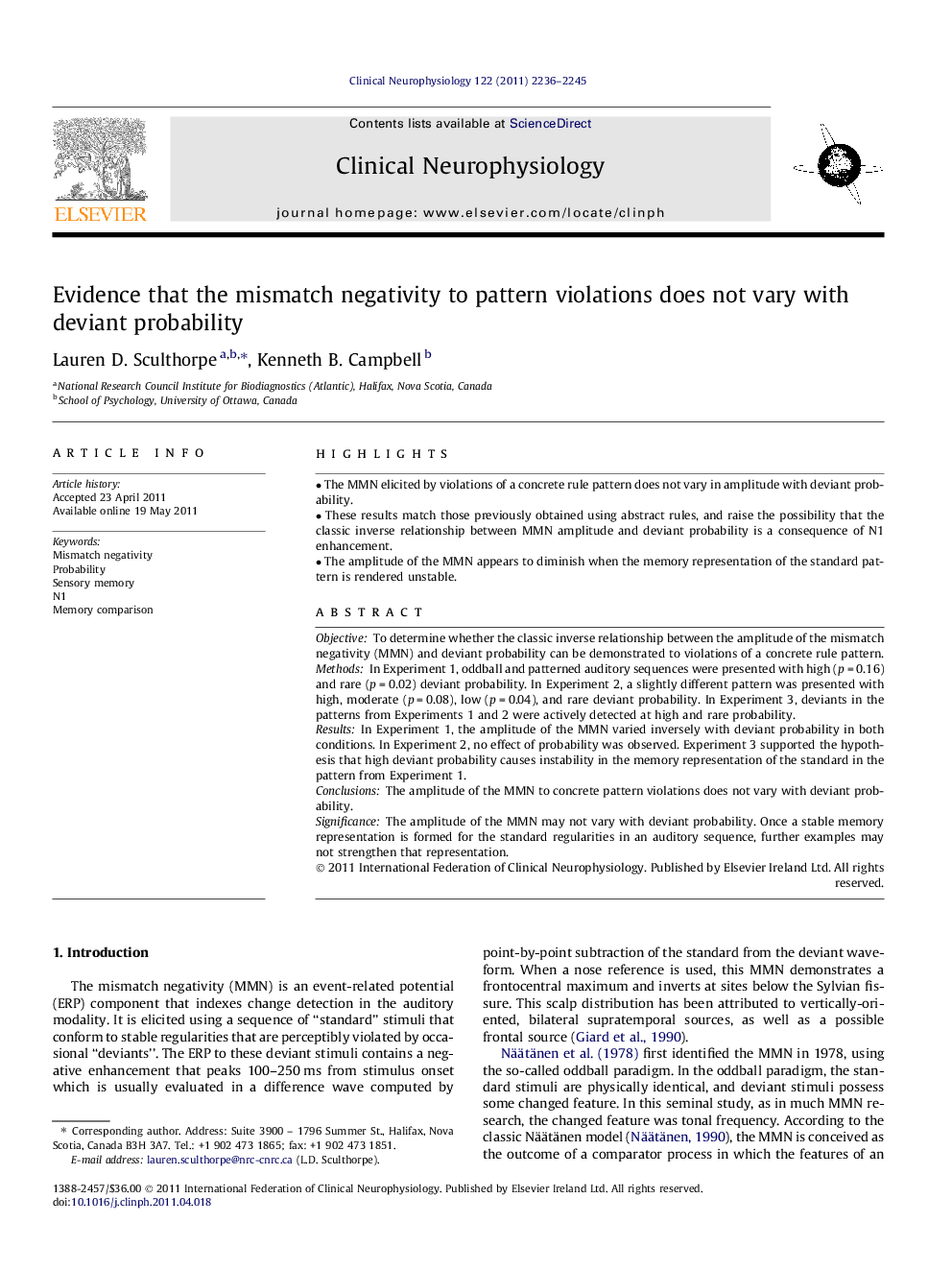| Article ID | Journal | Published Year | Pages | File Type |
|---|---|---|---|---|
| 3043802 | Clinical Neurophysiology | 2011 | 10 Pages |
ObjectiveTo determine whether the classic inverse relationship between the amplitude of the mismatch negativity (MMN) and deviant probability can be demonstrated to violations of a concrete rule pattern.MethodsIn Experiment 1, oddball and patterned auditory sequences were presented with high (p = 0.16) and rare (p = 0.02) deviant probability. In Experiment 2, a slightly different pattern was presented with high, moderate (p = 0.08), low (p = 0.04), and rare deviant probability. In Experiment 3, deviants in the patterns from Experiments 1 and 2 were actively detected at high and rare probability.ResultsIn Experiment 1, the amplitude of the MMN varied inversely with deviant probability in both conditions. In Experiment 2, no effect of probability was observed. Experiment 3 supported the hypothesis that high deviant probability causes instability in the memory representation of the standard in the pattern from Experiment 1.ConclusionsThe amplitude of the MMN to concrete pattern violations does not vary with deviant probability.SignificanceThe amplitude of the MMN may not vary with deviant probability. Once a stable memory representation is formed for the standard regularities in an auditory sequence, further examples may not strengthen that representation.
► The MMN elicited by violations of a concrete rule pattern does not vary in amplitude with deviant probability. ► These results match those previously obtained using abstract rules, and raise the possibility that the classic inverse relationship between MMN amplitude and deviant probability is a consequence of N1 enhancement. ► The amplitude of the MMN appears to diminish when the memory representation of the standard pattern is rendered unstable.
